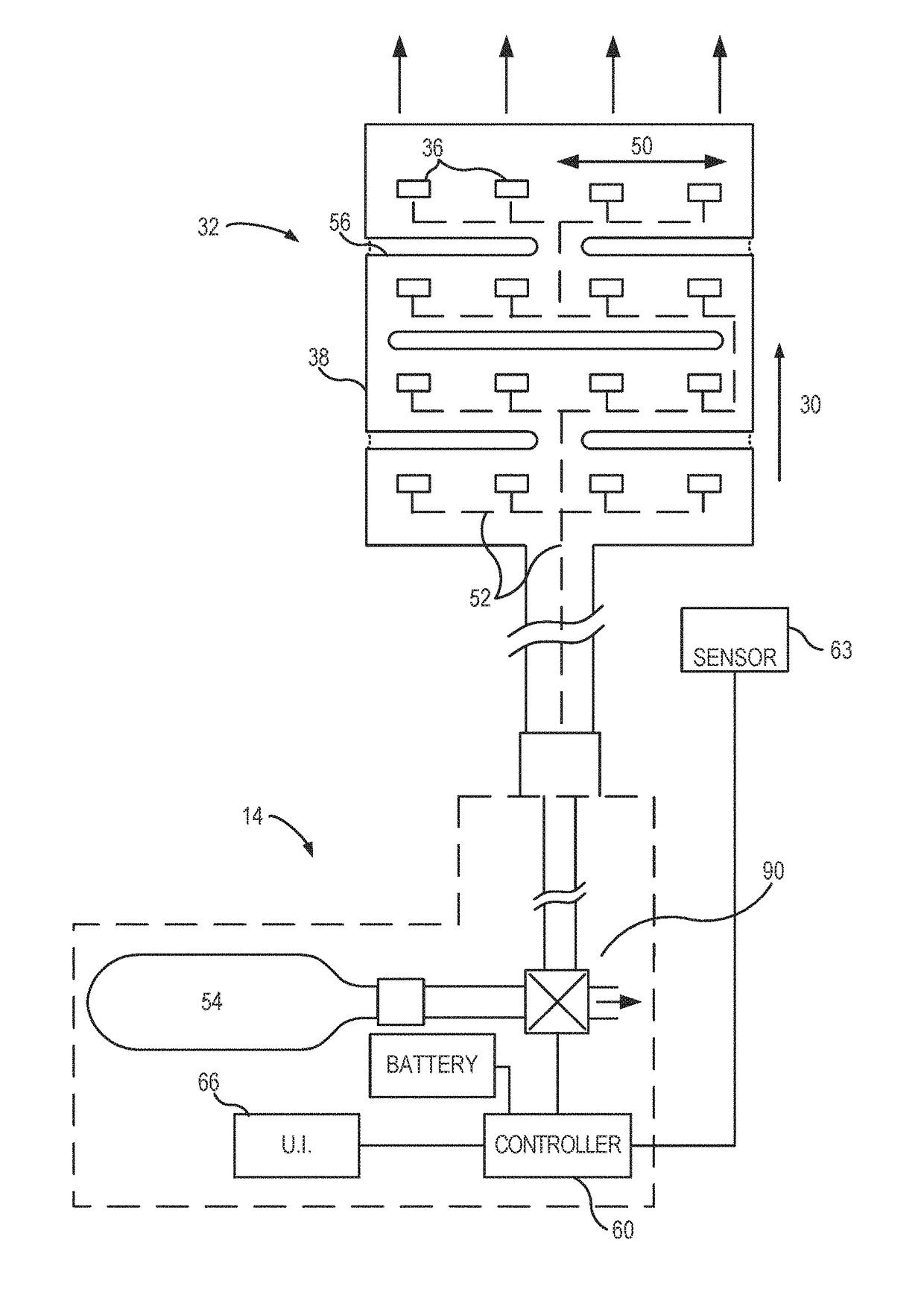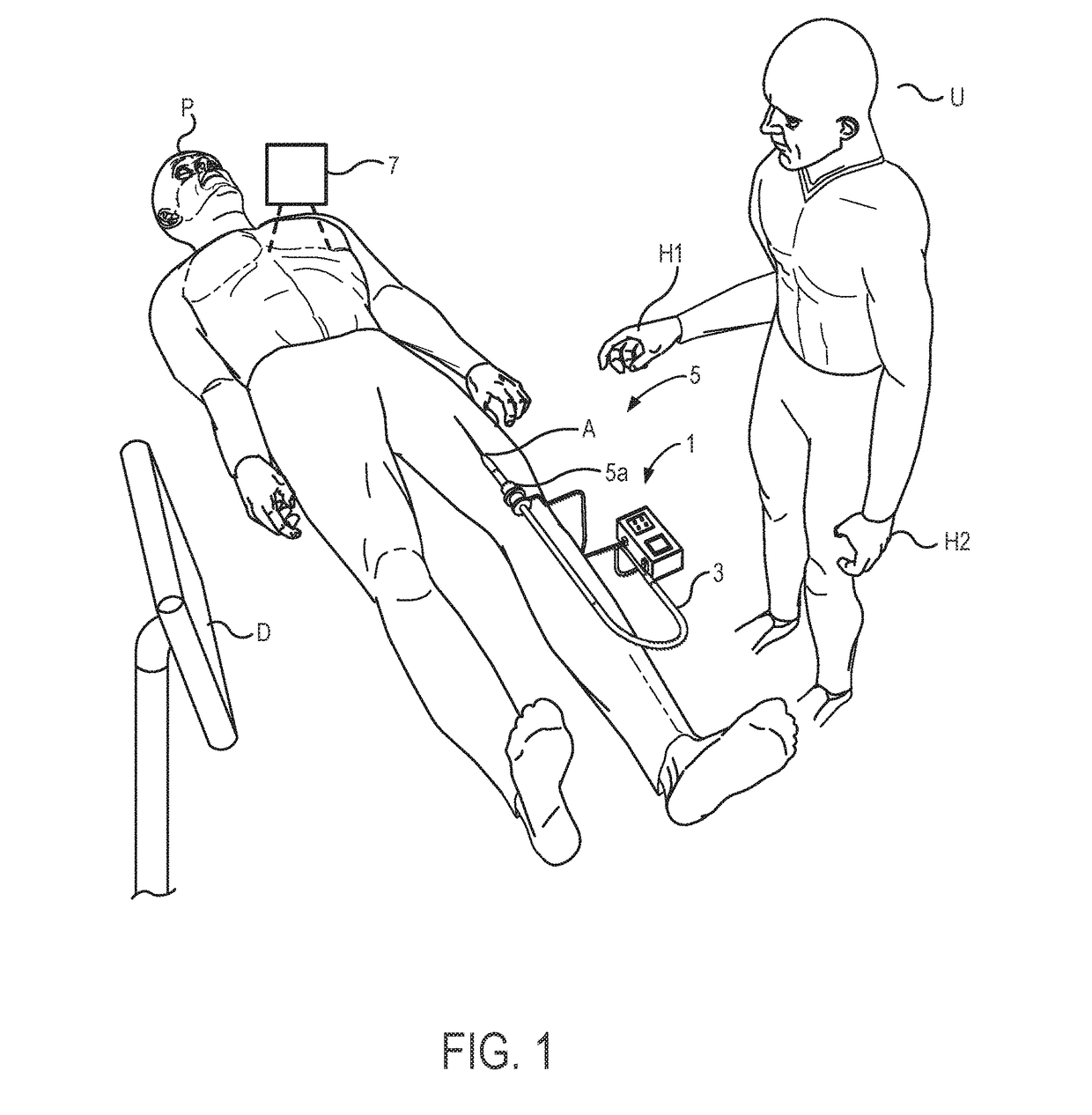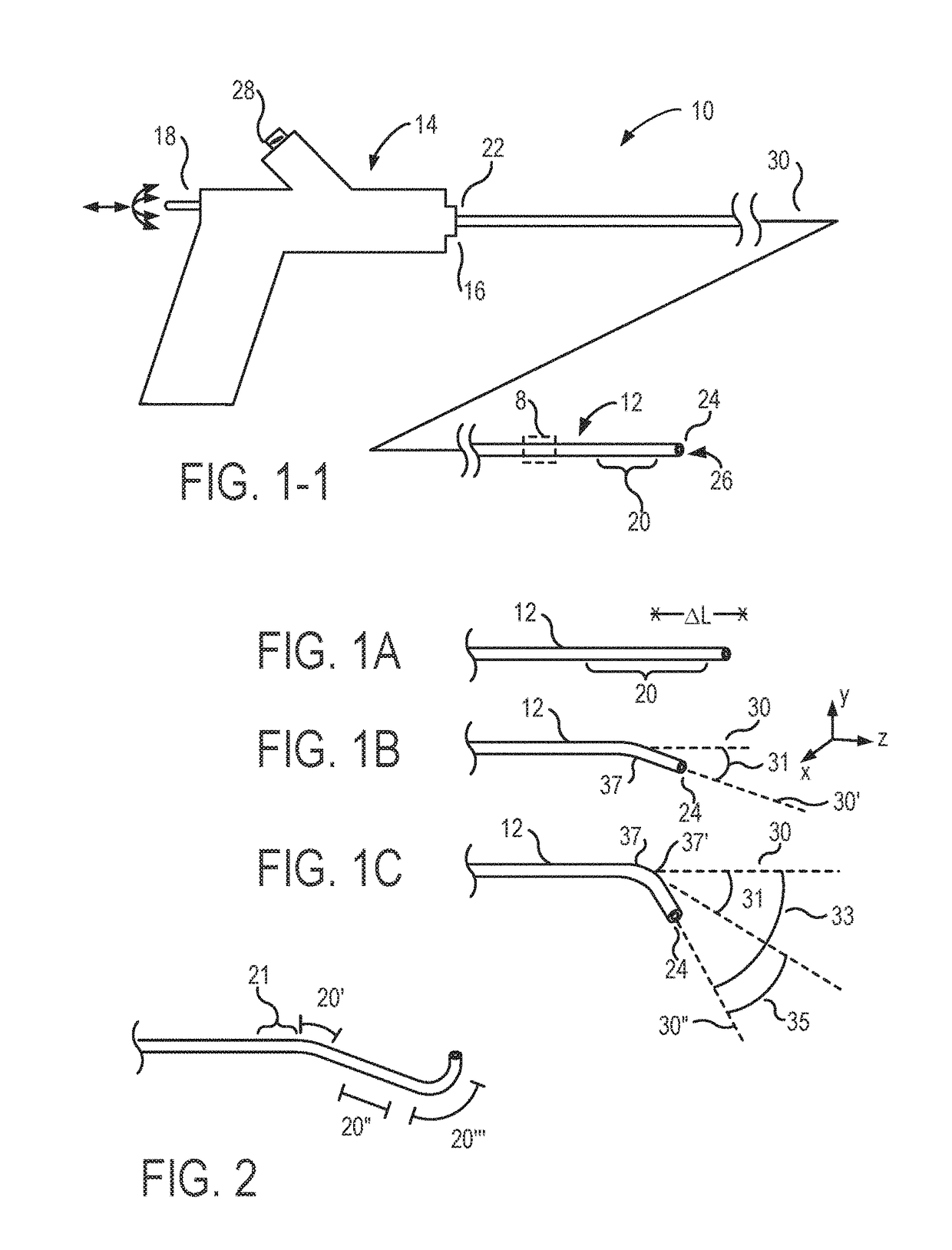Local contraction of flexible bodies using balloon expansion for extension-contraction catheter articulation and other uses
a technology of flexible body and local contraction, which is applied in the field of articulation devices, systems and methods of fluid-driven balloon arrays, can solve the problems of imposing significant trauma to collateral tissues, serious pain to patients, and serious damage to patients' health, so as to improve the flexibility of elongated bodies and reduce the risk of injury and other problems, to achieve the effect of modulating the stiffness of elongated bodies, reducing the length of elongated flexible medical structures, and reducing the risk of injury
- Summary
- Abstract
- Description
- Claims
- Application Information
AI Technical Summary
Benefits of technology
Problems solved by technology
Method used
Image
Examples
Embodiment Construction
[0056]The catheter bodies (and many of the other elongate flexible bodies that benefit from the inventions described herein) will often be described herein as having or defining an axis, such that the axis extends along the elongate length of the body. As the bodies are flexible, the local orientation of this axis may vary along the length of the body, and while the axis will often be a central axis defined at or near a center of a cross-section of the body, eccentric axes near an outer surface of the body might also be used. It should be understood, for example, that an elongate structure that extends “along an axis” may have length that extends in an orientation with a significant axial component, but the length of that structure need not be precisely parallel to the axis. Similarly, an elongate structure that extends “primarily along the axis” and the like will generally have a length that extends along an orientation that has a greater axial component than components in other or...
PUM
 Login to View More
Login to View More Abstract
Description
Claims
Application Information
 Login to View More
Login to View More - R&D
- Intellectual Property
- Life Sciences
- Materials
- Tech Scout
- Unparalleled Data Quality
- Higher Quality Content
- 60% Fewer Hallucinations
Browse by: Latest US Patents, China's latest patents, Technical Efficacy Thesaurus, Application Domain, Technology Topic, Popular Technical Reports.
© 2025 PatSnap. All rights reserved.Legal|Privacy policy|Modern Slavery Act Transparency Statement|Sitemap|About US| Contact US: help@patsnap.com



